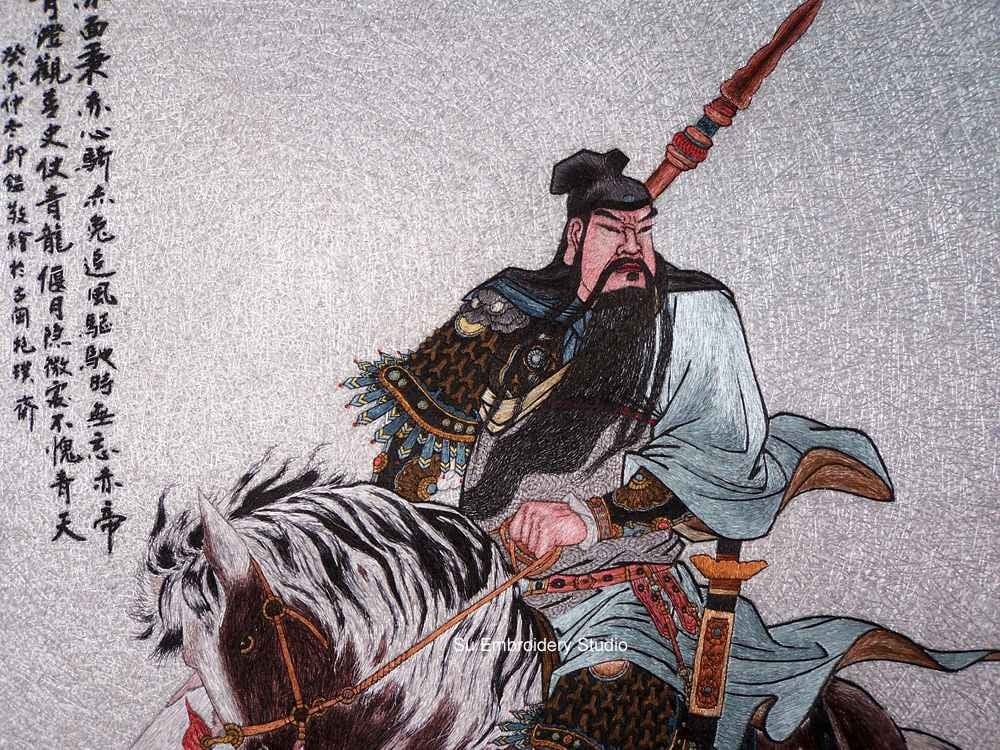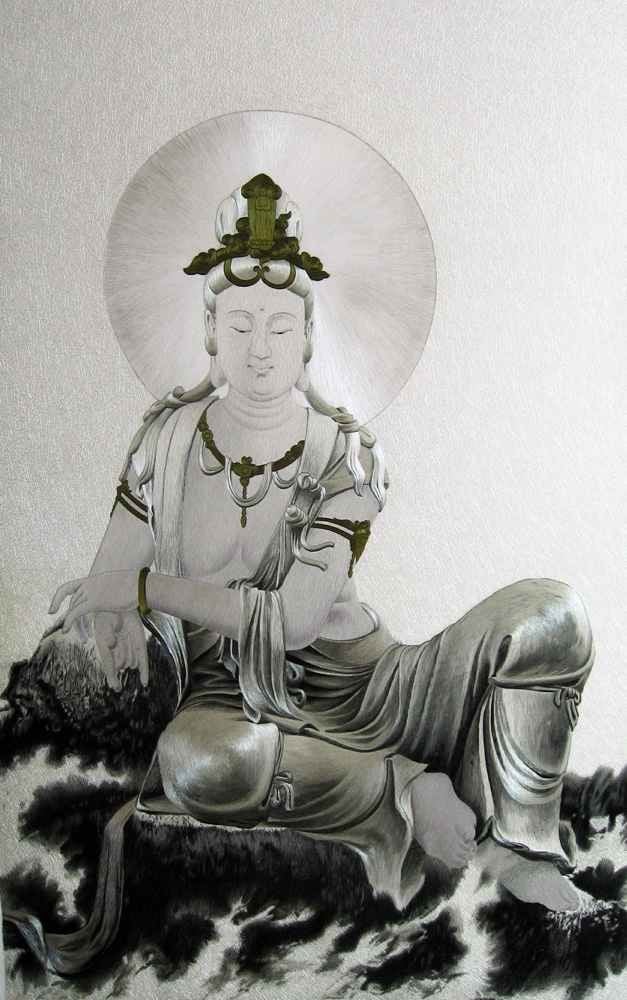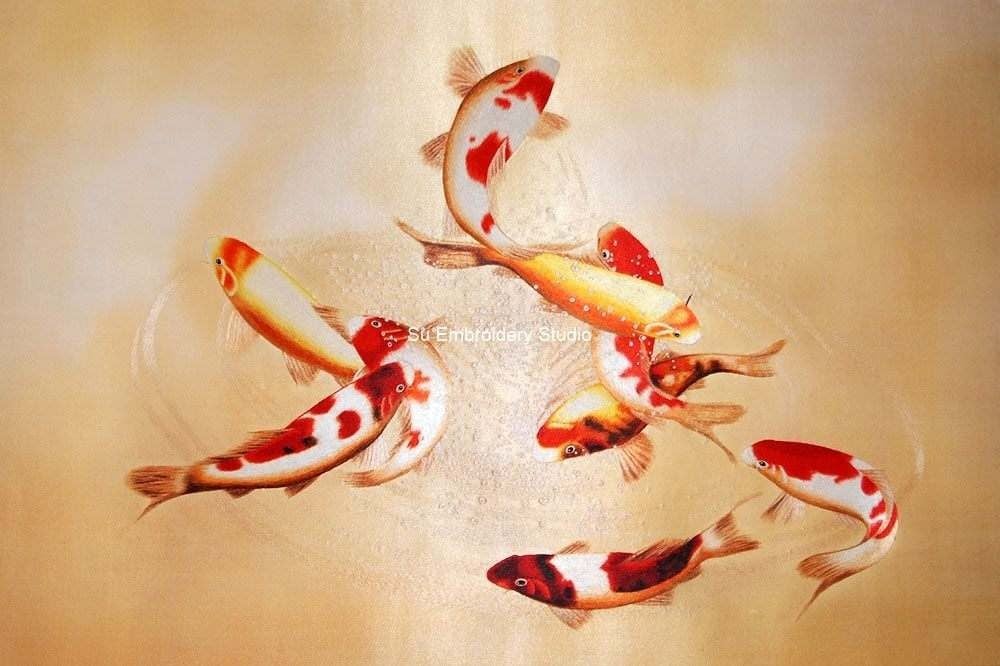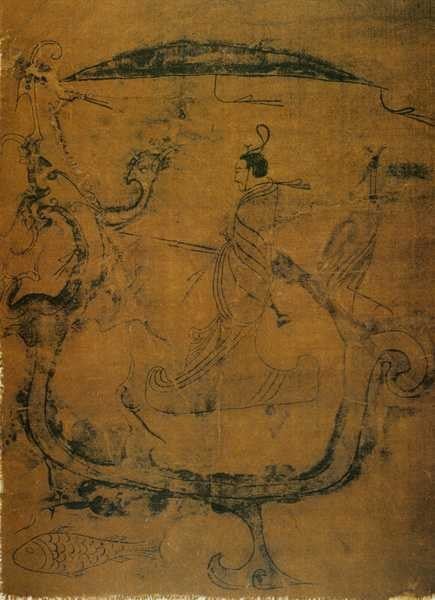
Silk has long been revered as a medium for artistic expression in China, giving rise to two exquisite art forms: Chinese silk painting and Chinese silk embroidery. In our post today, we will explore the rich traditions and intricate techniques of these two ancient crafts.
I. Chinese Silk Painting: Brushstrokes of Tradition
Chinese silk painting, or sichouhua (丝绸画), boasts a history of over 2000 years, originating from China. It involves applying colored pigment to silk cloth, predating the invention of paper. Initially known as 'Bo' painting (bo, 帛), referring to the white silk used as a surface, silk was the ideal canvas due to its luxuriousness, versatility, and lightweight nature.

Chinese Silk Painting of 'Dragon' in Warring States
Ancient Chinese artisans meticulously prepared silk cloths by smoothing the surface before applying color. Using animal hair paintbrushes and ink mixtures, they created artworks that have survived for centuries. Today, silk painting techniques have evolved, incorporating dyes and methods from Europe and Asia.
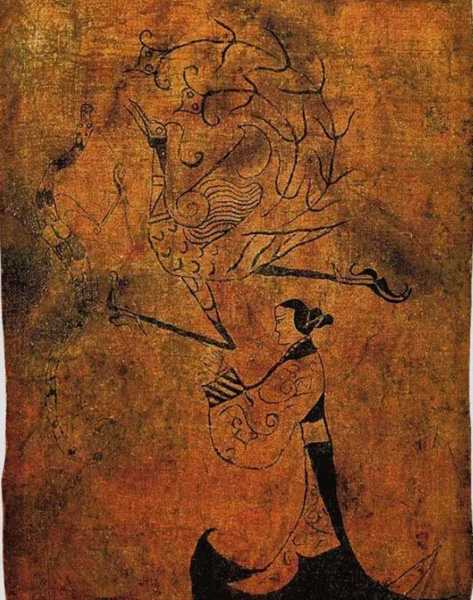
Chinese Silk Painting of 'Phoenix in Warring States
The silk surface is typically prepared by stretching and dyeing silk with a background color. Artists then use resists like gutta to sketch outlines on the silk, controlling the movement of pigments. Unlike painting on canvas or paper, silk painting requires artists to consider pigment placement and movement, resulting in soft and diffuse artwork akin to watercolor.
History and Development of Chinese Silk Painting
Silk painting in China dates back to the Warring States period (476-221 BC) but reached its zenith during the Western Han dynasty (206 BC to 25 AD). Initially used for calligraphy painting, silk painting expanded to include human figures, religious characters, and natural forms.
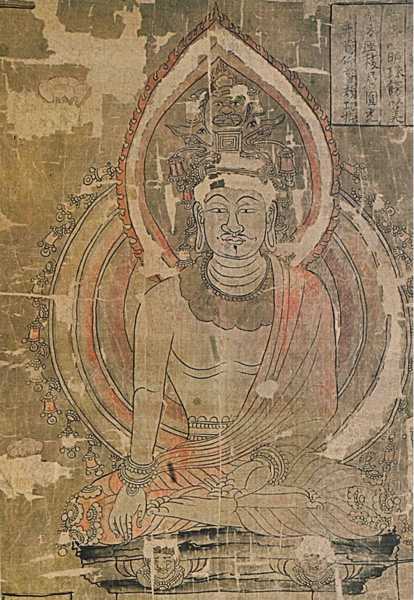
A Dunhuang Silk Painting 'Seated Buddha'
The oldest silk painting artifacts were discovered in a tomb from the Warring States period in central China, featuring mythical beasts like dragons and phoenixes. Over time, silk painting spread across Asia and Europe, thanks to the end of China's silk production monopoly and trade routes like the Silk Road.
Spread of Silk Painting from China
Legend has it that a Chinese princess smuggled silkworm eggs and mulberry seeds to a Khotan prince in Central Asia, ending China's silk production monopoly. This led to the spread of silk painting techniques to India, Japan, and eventually Western Europe.
Silk painting techniques varied across regions, influenced by cultural exchanges and artistic innovations. In the 12th century, the Crusades facilitated the spread of silk production to Western Europe, where Italy emerged as a major center for silk. By the 18th century, silk painting gained popularity worldwide.
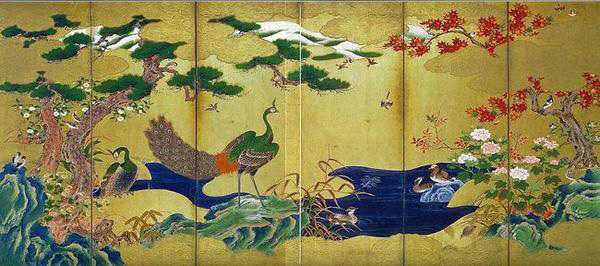
Japanese Silk Painting 'Birds and Flowers'
Silk Painting Today
Silk painting has evolved into a modern art form practiced globally, with diverse styles and techniques. In China, artists continue to innovate, blending traditional techniques with Western painting methods. Meanwhile, modern techniques have made silk painting accessible to all, ensuring its legacy for generations to come.
II. Chinese Silk Embroidery: Threads of Heritage
Just as silk painting flourished in ancient China, so too did Chinese silk embroidery, an art form characterized by meticulous stitching and intricate designs. Dating back thousands of years, Chinese silk embroidery showcases the country's rich cultural heritage and artistic prowess.
Su Embroidery Studio specializes in traditional Chinese silk embroidery, preserving centuries-old techniques and patterns. Our skilled artisans hand-stitch each design using the highest quality silk threads, creating stunning works of art that embody the essence of Chinese culture.
Traditional Chinese Silk Embroidery Made by SES
Modern Chinese Silk Embroidery Made by SES
History and Development of Chinese Silk Embroidery
Chinese silk embroidery has a history that spans millennia, with its origins tracing back to ancient times. Like silk painting, embroidery in China served both practical and decorative purposes, adorning garments, textiles, and ceremonial items.
The earliest examples of Chinese silk embroidery can be found in archaeological discoveries dating back to the Shang dynasty (1600–1046 BC). Over the centuries, hand embroidery techniques evolved, influenced by cultural exchanges, artistic innovations, and changing dynasties.
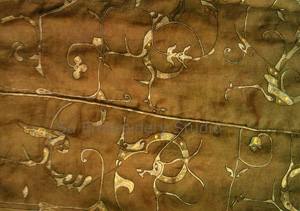
Silk Quilt with Pairs of Embroidered Phoenixes and Dragons in the Warring State
Spread of Silk Embroidery from China
Similar to silk painting, Chinese silk embroidery spread beyond China's borders, reaching neighboring countries and distant lands through trade and cultural exchanges. Silk Road routes facilitated the exchange of silk and embroidery techniques, leading to the proliferation of this intricate art form across Asia and beyond.
In Japan, for example, silk embroidery techniques were introduced from China as early as the 5th century AD. Japanese artisans adapted and refined these techniques, incorporating them into their own rich tradition of textile arts.
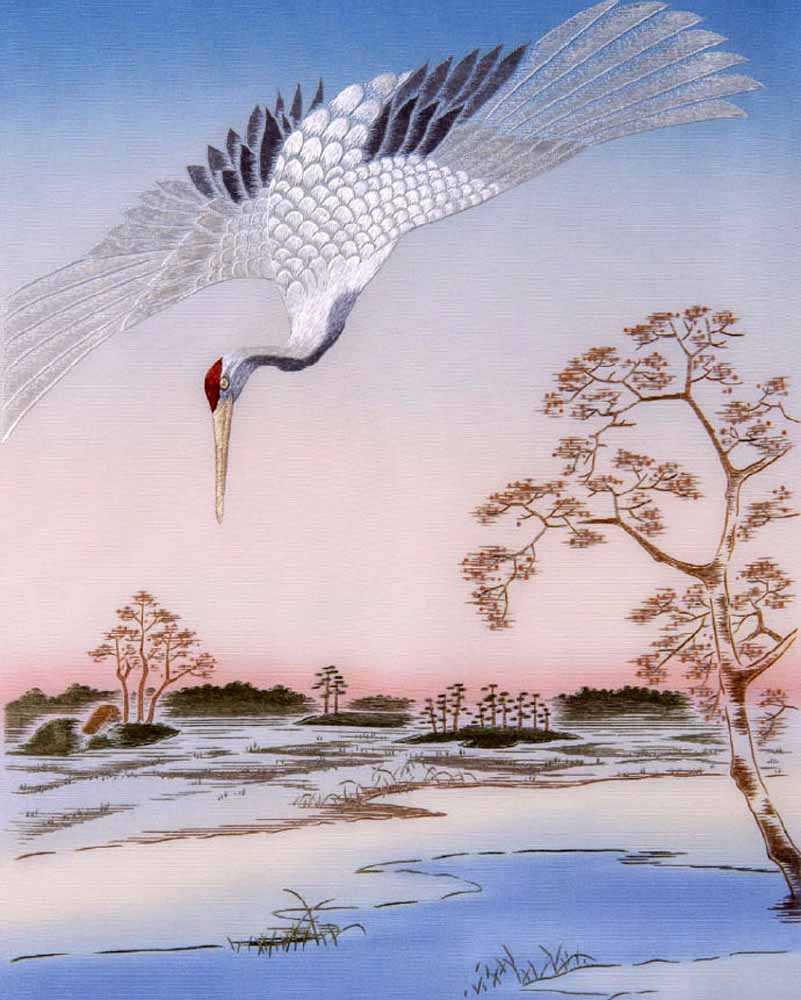
Japanese Silk Embroidery 'Crane'
Silk Embroidery Today
While ancient in origin, Chinese silk embroidery remains a vibrant and thriving art form in the modern world. At Su Embroidery Studio, we honor this tradition by preserving and promoting the art of Chinese silk embroidery, ensuring its legacy for future generations.
From traditional designs to contemporary interpretations, Chinese silk embroidery continues to captivate audiences with its beauty, craftsmanship, and cultural significance.

Chinese Silk Embroidery at London Fashion Week, a Mix of Traddition and Modernity
III. Conclusion
In conclusion, the rich traditions of silk painting and silk embroidery in China exemplify the country's profound cultural heritage and artistic prowess. With over 2000 years of history, these two art forms have evolved and flourished, leaving an indelible mark on the world of fine arts.
Silk painting, originating from ancient China, has captivated audiences worldwide with its delicate beauty and intricate techniques. From its humble beginnings as a medium for calligraphy painting to its modern iterations that blend Eastern and Western styles, silk painting continues to enchant artists and enthusiasts alike.
Similarly, silk embroidery, with its meticulous craftsmanship and timeless elegance, showcases the mastery of Chinese artisans. Dating back to the Han Dynasty, silk embroidery has evolved into a highly revered art form, with distinct regional styles and innovative techniques that push the boundaries of hand embroidery art.
by Su Embroidery Studio (SES), Suzhou China
SES is dedicated to Chinese Silk Embroidery Art and High-End Custom Embroidery
Find SES's embroidery work at Chinese Silk Embroidery for Sale.










